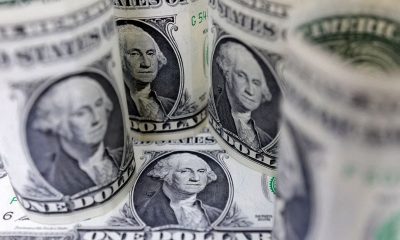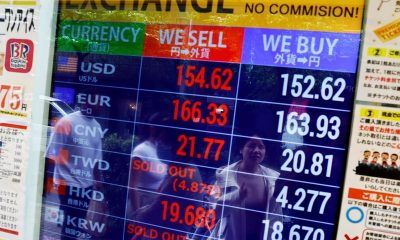Commodities
Brazil’s plans to drill for oil in the Amazon hit stiff Indigenous resistance
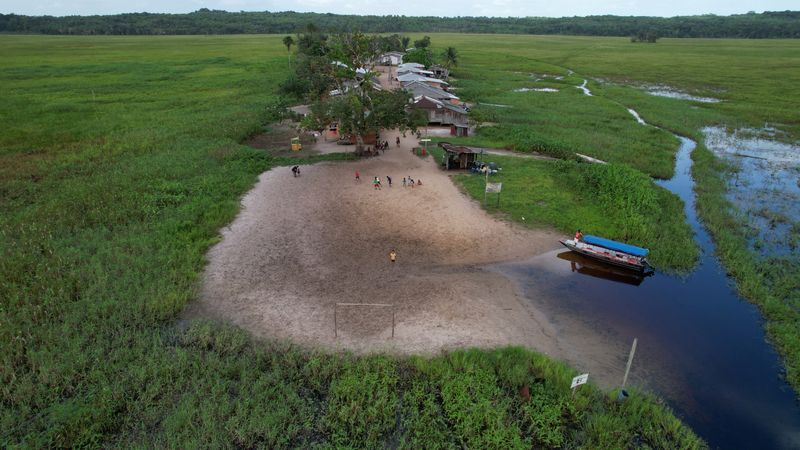
By Marta Nogueira and Fabio Teixeira
OIAPOQUE, Brazil (Reuters) – State-run energy firm Petrobras has hit growing resistance from Indigenous groups and government agencies to its premier exploration project, which would open the most promising part of Brazil’s northern coast to oil drilling.
Environmental agency Ibama denied Petrobras a license for exploratory drilling offshore in the Foz do Amazonas area last year, citing possible impacts on Indigenous groups and the sensitive coastal biome. But a Petrobras appeal for Ibama to reverse its decision has drawn powerful political backing.
President Luiz Inacio Lula da Silva said in September that Brazil should be able to “research” the region’s potential resources, given the national interest. Energy Minister Alexandre Silveira last week told journalists that it is “Brazil’s right to know the potential” of the offshore fields.
That has bolstered bullish rhetoric from Petrobras about its chances of getting a license to drill in the blocks off the coast of Amapa state.
“Get ready Amapa, because we are arriving,” Petrobras CEO Jean Paul Prates told local politicians and oil executives at an event last month promoting offshore exploration along the northern coast in an area known as Equatorial Margin. He called it “perhaps the last frontier of the oil era for Brazil.”
He has said he expects to start drilling in the second half of this year or sooner in the most promising part of the Equatorial Margin, named the Foz do Amazonas basin, for the mouth of the Amazon (NASDAQ:) River several hundred kilometers away. Foz de Amazonas shares geology with the coast of nearby Guyana, where Exxon (NYSE:) is developing huge fields.
Ibama chief Rodrigo Agostinho said in November that a decision would be made in early 2024, although labor disputes at the agency have since slowed the pace of environmental licensing.
Visits to four Indigenous villages, interviews with over a dozen local leaders, and previously unreported documents show organized opposition mounting to Petrobras’ attempt to reverse the halt on exploratory drilling.
Petrobras has drawn fresh government scrutiny. Indigenous affairs agency Funai asked Ibama regulators in December to run several more studies to assess impacts, according to a Dec. 11 government memo from Funai to Ibama obtained in a freedom of information request. The proposed studies would have to be done before Ibama can decide whether to accept the Petrobras appeal.
In July 2022, the Council of Chieftains of the Indigenous People of Oiapoque (CCPIO), an umbrella group representing more than 60 Indigenous villages in the area, asked federal prosecutors to get involved, denouncing an alleged violation of their rights.
Brazilian prosecutors have a mandate to protect Indigenous peoples, often taking their side in disputes with firms or federal and state governments. In September 2022 they recommended that Ibama not issue the license before a formal consultation of the local communities. Records from the prosecutors’ preliminary investigation, seen by Reuters, show that in December 2023, CCPIO asked them to broker a 13-month formal consultation with Petrobras about Indigenous views on the project.
The consultation process, along with studies proposed by Funai, would push a decision into 2025 when Brazil will host the COP30 climate change summit in the Amazon city of Belem, which could make it more politically difficult to approve drilling, a person close to CCPIO told Reuters.
Minutes from a June 2023 meeting between Petrobras, CCPIO leaders and prosecutors show the company offered to consult local communities about eventual commercial oil production in the area, if Ibama requests it, but did not commit to a consultation before drilling exploratory wells.
Asked about Indigenous leaders’ calls for immediate consultations, Petrobras told Reuters in a statement that the time for such requests has passed.
“The definition of whether or not it is necessary to consult indigenous peoples and/or traditional communities takes place at the initial stage of the environmental licensing process,” Petrobras said.
Ibama has not yet replied to the recommendation by Indigenous affairs agency Funai late last year for more assessments of the effects of Petrobras’ exploration plans, according to an April 3 Funai document seen by Reuters.
Both agencies did not reply to requests for comment by Reuters. CCPIO and prosecutors said a consultation must be made before Ibama issues a license to drill.
FAULT LINES The drilling standoff has created a fault line in Lula’s government, which is balancing his vows to protect the Amazon and its Indigenous people with the interests of Petrobras and political allies that stand to reap the benefits of a new oil-producing region.
Silveira, the energy minister, has said that a single Foz de Amazonas block off the coast of Amapa state could yield more than 5.6 billion barrels of oil, which would be the company’s biggest discovery in over a decade.
In its appeal to Ibama, the company said that exploration will have no negative impact on local communities.
“We ratify the understanding that there is no direct impact of the temporary activity of drilling a well 175 km from the coast on Indigenous communities,” Petrobras said.
Local people and some environmentalists warn that drilling could threaten coastal mangroves and vast wetlands rich with fish and plant life, while disrupting the lives of the 8,000 Indigenous people in Oiapoque, on Brazil’s far northern coast.
The CCPIO, the highest Indigenous authority in Oiapoque, is composed of more than 60 caciques, or chieftains, representing over 8,000 people. They do not oppose the search for oil per se, but invoke what they say is a right to prior consultation by Petrobras, with supervision from the federal prosecutors’ office and Funai.
The International Labor Organization convention 169, which Brazil signed, says that governments must consult Indigenous and tribal peoples through their representative institutions, whenever considering legislative or administrative measures that may affect them directly.
CHANGE AFOOT
The plans to drill are already changing Oiapoque. Waves of migrant workers have arrived looking for jobs in an oil industry that does not yet exist, state lawmaker Inacio Monteiro said.
Monteiro said he meets often with Indigenous constituents, talking to them about the benefits that Petrobras could bring to Oiapoque, including jobs, tax revenue and social programs.
Yet CCPIO and its allies have become increasingly vocal with their resistance as Petrobras garners support for its appeal, including at the COP28 climate summit in December, where Luene Karipuna told a panel that Petrobras and local politicians had tried to silence her people.
“Strategically, this prior consultation is our only safety net,” 25-year-old Karipuna, who is studying to be a teacher, said near her home in the Santa Izabel village, where marshes fill with seawater at certain times of the year.
When the rivers run low, tides bring in saltwater fish the villagers eat, but some interviewed by Reuters fear it could just as easily bring oil spills.
POLITICAL PRESSURE
Indigenous leaders said a full-court press from local politicians in support of Petrobras was on display at a May 2023 public hearing that Monteiro, the state lawmaker, called just days after Petrobras’ license was denied.
Amapa’s political powerbrokers, including key Lula allies, rallied within days at Oiapoque’s town hall for the hearing to promote Petrobras’ plans to drill.
At the event, one man in a white polo shirt and a feathered headdress, Ramon Karipuna told the crowd that Indigenous people were in favor of drilling, according to minutes of the meeting seen by Reuters.
Karipuna said he spoke for the coordinator of the CCPIO council of chieftains, who was absent for “health reasons.”
Petrobras later cited Karipuna’s endorsement in its appeal of the denied drilling license and described him as a “CCPIO representative.”
However, CCPIO coordinator Cacique Edmilson Oliveira told Reuters he was not sick that day. CCPIO had refused to take part in the hastily summoned event, according to a May 18 letter sent in response to Monteiro’s invitation to the hearing and seen by Reuters.
“This is very concerning. That’s why we are saying that we already feel threatened,” Oliveira said, accusing Petrobras of distorting the views of Indigenous leaders. “We never sat down and reached an agreement for approval.”
In a telephone interview, Karipuna confirmed he worked at the town hall and that he is not a member of CCPIO – even though Petrobras used his words as its main argument to Ibama that Indigenous representatives supported drilling. He also backed away from his comments in favor of drilling.
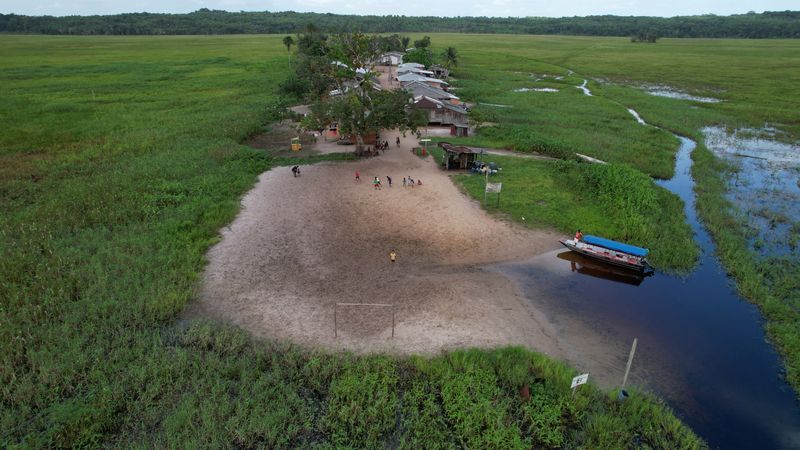
“To this day many people have doubts about this Petrobras business,” he said.
Asked about its mischaracterization of Karipuna, Petrobras cited the minutes of the May 2023 meeting, without elaborating.
Commodities
Gold prices sink below $2,300 as markets brace for hawkish Fed

Investing.com– Gold prices fell in Asian trade on Wednesday, extending steep overnight losses that saw the yellow metal slide past a key support level as markets braced for potentially hawkish signals from the Federal Reserve later in the day.
The yellow metal fell further from record highs hit in April as diminished safe haven demand, amid some de-escalation in global geopolitical tensions, left it vulnerable to headwinds from interest rates.
fell 0.1% to $2,285.19 an ounce, while expiring in June fell 0.3% to $2,295.25 an ounce by 23:50 ET (03:50 GMT). Spot prices fell below the closely-watched $2,300 an ounce level on Tuesday, leaving the yellow metal open to more losses before more cues on U.S. interest rates.
Fed meeting awaited, Powell to wax hawkish
Focus was now squarely on the conclusion of a two-day later on Wednesday, where the central bank is set to keep rates unchanged.
But Fed Chair Jerome Powell is widely expected to offer a hawkish outlook, especially after a string of hotter-than-expected inflation readings. A stronger-than-expected reading on the , for the first quarter, furthered this notion on Tuesday.
Strong inflation readings saw traders steadily price out expectations of early rate cuts by the Fed. The central bank is now only expected to begin cutting rates by September, if at all.
Higher-for-longer interest rates bode poorly for gold, given that they increase the opportunity cost of investing in the yellow metal. Dwindling expectations of rate cuts dragged gold prices down from record highs over the past two weeks.
remove ads
.
Other precious metals also fell on Wednesday, as the dollar shot up to near six-month highs. fell 0.2% to $943.95 an ounce, while fell 0.2% to $26.598 an ounce.
Copper prices fall from two-year highs after stellar April
Among industrial metals, copper prices fell from two-year highs amid pressure from a stronger dollar, while stellar gains through April also made for some profit-taking.
on the London Metal Exchange fell 0.8% to $9,910.0 a ton, while fell 0.3% to $4.5285 a pound.
Both contracts surged between 14% and 16% in April on expectations of tighter supplies, amid more sanction on Russia and production cuts by major Chinese refiners.
But fears of slowing economic growth- especially as interest rates remain higher for longer- may chip away at copper in the near-term.
Commodities
Oil falls for a third day on Middle East ceasefire hopes
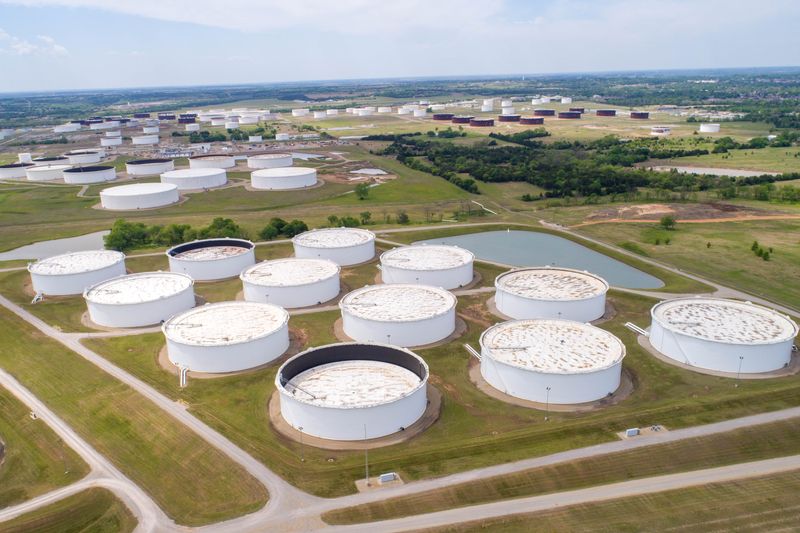
By Alex Lawler and Deep Kaushik Vakil
LONDON (Reuters) -Oil fell more than 1% on Wednesday, losing ground for a third straight session on hopes of a ceasefire agreement in the Middle East and by rising crude inventories and production in top consumer the United States.
Expectations that a ceasefire agreement between Israel and Hamas could be in sight have grown following a renewed push led by Egypt, even as Israeli Prime Minister Benjamin Netanyahu has vowed to go ahead with a long-promised assault on Rafah.
futures for July were down $1.24, or 1.4%, to $85.09 a barrel by 1145 GMT, having hit $84.78, their lowest since March 15.
U.S. West Texas Intermediate crude futures for June were down $1.33, or 1.6%, to $80.60, after touching their lowest since March 21.
“The crude market is weighed down by continued hopes for a ceasefire,” said Ole Hansen of Saxo Bank.
“In addition, stubborn U.S. inflation has further reduced rate cut expectations.”
U.S. Federal Reserve officials are concluding their latest two-day policy meeting on Wednesday and are expected to hold interest rates steady. A rate cut would act as a boost to economic growth and fuel demand.
“Continued signs of inflation also raised concerns about demand for crude oil. This comes ahead of the U.S. driving season, where demand for gasoline rises strongly,” ANZ analysts said in a report on Wednesday.
Further weighing on prices were separate reports that inventories rose and production increased.
remove ads
.
U.S. crude inventories rose 4.906 million barrels in the week ended April 26, according to market sources citing American Petroleum Institute figures, which defied expectations for a decline of 1.1 million barrels.
Traders will be waiting to see if official data from the Energy Information Administration (EIA) at 1430 GMT confirms the trend.
On Tuesday, the EIA said U.S. production rose to 13.15 million barrels per day (bpd) in February from 12.58 million bpd in January, its biggest monthly increase in about 3-1/2 years.
Commodities
Oil prices sink on surprise US inventory build; Middle East peace talks eyed

Investing.com– Oil prices fell sharply Wednesday, extending recent losses as an unexpected build in U.S. stockpiles and strong crude production sparked doubts over tight supply conditions ahead of the Fed meeting.
At 08:25 ET (12:25 GMT), fell 1.4% to $85.15 a barrel, while fell 1.6% to $80.61 a barrel, dropping to their lowest levels since mid-March.
U.S. inventory build, strong output weighs
Data from the American Petroleum Institute, released on Tuesday, indicated that U.S. grew by 4.9 million barrels in the week to April 26, a far greater build than the increase of 1.5 million barrels expected.
While gasoline and distillate stockpiles shrank, if this rise in overall inventories id confirmed by , due later in the session, it would suggest that oil supplies were not as tight as initially expected in the world’s biggest fuel consumer.
This notion was reinforced by separate data showing U.S. domestic crude output rose to 13.15 million barrels per day in February from 12.58 million barrels in January, its biggest jump since October. The rise also saw U.S. production come back in sight of record highs.
This spurred doubts over just how tight global crude markets would be in the coming months, given that U.S. output remains robust and the country’s oil markets remain well supplied.
Fed fears in play, dollar strength weighs
Markets were also on edge ahead of the conclusion of a two-day policy meeting of the Federal Reserve later in the day.
remove ads
.
While the central bank is widely expected to , Fed Chair Jerome Powell is likely to strike a hawkish note following a series of strong inflation readings.
Expectations of higher-for-longer U.S. interest rates saw the dollar rise sharply this week, which also weighed on oil prices, with prolonged exposure to elevated interest rates likely to weigh on economic activity by the world’s largest consumer.
Middle East peace talks
A potential ceasefire between Israel and Hamas could also further downplay expectations of tighter markets, as it would lower the risks of supply disruptions in the key oil-rich Middle East.
Expectations that a ceasefire agreement between Israel and Hamas could be in sight have grown following a renewed push led by Egypt.
“The geopolitical risk premium continues to fade as tensions between Israel and Iran have eased. There are also some hopes for a potential ceasefire between Israel and Hamas,” said analysts at ING, in a note.
(Ambar Warrick contributed to this article.)

 Forex2 years ago
Forex2 years agoForex Today: the dollar is gaining strength amid gloomy sentiment at the start of the Fed’s week

 Forex2 years ago
Forex2 years agoHow is the Australian dollar doing today?

 Forex1 year ago
Forex1 year agoUnbiased review of Pocket Option broker

 Forex2 years ago
Forex2 years agoDollar to pound sterling exchange rate today: Pound plummeted to its lowest since 1985

 Cryptocurrency2 years ago
Cryptocurrency2 years agoWhat happened in the crypto market – current events today

 World2 years ago
World2 years agoWhy are modern video games an art form?

 Stock Markets2 years ago
Stock Markets2 years agoMorgan Stanley: bear market rally to continue

 Economy2 years ago
Economy2 years agoCrude oil tankers double in price due to EU anti-Russian sanctions



